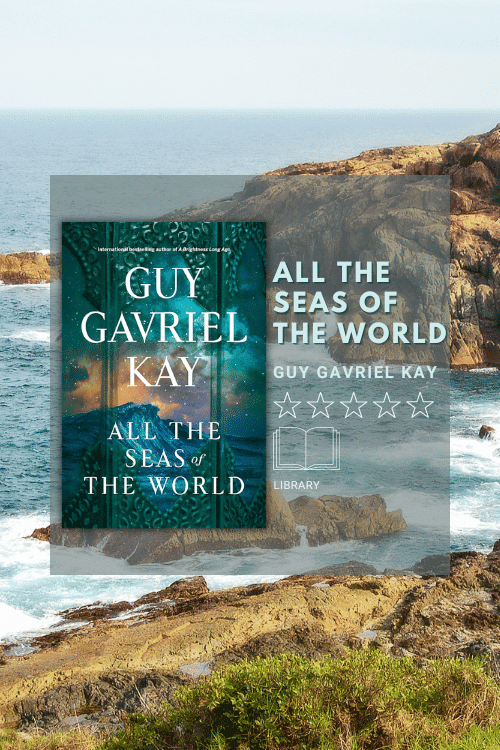All the Seas of the World is another outstanding story in Guy Gavriel Kay’s alternate universe. It begins approximately five to ten years after A Brightness Long Ago. The story is told from multiple perspectives but focuses on two primary characters, Rafel and Nadia. They are merchants and pirates and have a variety of skills between them. The actions Rafel and Nadia take at the beginning of the book act as a pebble in a pond, the ramifications expanding outwards. Rafel and Nadia aren’t able to escape the consequences and get involved with plots and people they couldn’t have conceived of.

Book Information
Publisher: Penguin Canada
Imprint: Viking
First Published: May 17 2022
Format: ebook
Source: Library
Genre: Fantasy
As always, Guy Gavriel Kay builds a beautiful world with complex characters. We get to see Falco D’Arcosi and Danio Cerra again. They’ve aged and grown from where we left them in A Brightness Long Ago. A chance meeting between Falco and Nadia gives him more levers to pull across the continent. Falco continues to be so devious, pushing people, princes, and clergy down the hallways they think have many doors open for them to choose from. They don’t realize that Falco has barred all the options he doesn’t like, so it’s only the illusion of choice.
I love and am frustrated by how Kay creates his characters in almost every book I’ve read. Each character is an archetype, with a handful of dominant personality traits and history to support it. Falco, for example, is an honourable mercenary who loves his wife and city. That one sentence explains most of his motivations for doing anything. If you want to predict his behaviour, ask:
- Does it place his wife or city at risk?
- Does it provide benefits for his wife or city?
- Does it conflict with direct promises or commitments he’s made?
- Will his company of mercenaries be negatively affected?
While the reader still sees Kay’s characters as vulnerable, growing and developing, having internal conflict, etc., they ultimately behave according to their archetype. I love it because you get to believe that people are consistent and strive almost single-mindedly towards their objectives for the book’s duration. I’m frustrated because people aren’t that consistent, don’t know themselves well, and always take actions that aren’t in line with their values.
All the Seas of the World focuses on religious divides between the Kindath, Jaddites and the Asharites. These religions are direct parallels to Judaism, Christianity and Islam. I love how individual believers choose to interpret their faith and how they treat each other. For such a sensitive topic, faith is handled well. While there is war and tension between the Jaddites and Asharites after the fall of Sarantium, individuals are still able to be people not wholly defined by their religion, regardless of how devout they are. There are variations, as some individuals are more fundamentalist than others. It’s something I’ve always appreciated in Kay’s alternate world. The character interactions have depth and nuance.
All the Seas of the World is a moving story. Watching Nadia confront her past and her fears is powerful. Rafel’s yearning for a place to call home is shattering. All the other subplots and ancillary characters add poignancy and depth to the layers of the story. Reading this story evoked so much happy nostalgia for me as I call to mind the Lions of Al-Rassan, Sailing to Sarantium, and the other books I’ve read in this world.
